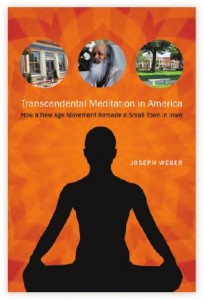Posted by Geoff Gilpin on April 21, 2014
On the surface, evolutionary psych looks pretty grim. We pride ourselves on individuality and free will, but many of our choices and behaviors are determined genetically with mathematical precision and little wiggle room. For all our technological progress, human nature hasn’t changed much since it developed hundreds of thousands of years ago in Africa. Our minds pump out beliefs and emotions that were great for coping with saber-tooth cats but now cause us no end of trouble.
Given the fix we’re in, it’s not surprising that some people who study the subject speak of evolution as a kind of evil force. It bears a resemblance to the Christian devil—a deceiver who plants lies in our minds and self-destruction in our hearts. You can also look at it from an Eastern perspective:
maya, (Sanskrit: “wizardry,” or “illusion”), a fundamental concept in Hindu philosophy… Maya originally denoted the power of wizardry with which a god can make human beings believe in what turns out to be an illusion; by extension it later came to mean the powerful force that creates the cosmic illusion that the phenomenal world is real. …
— Encyclopedia Britannica
Buddha and the ancient sages weren’t talking about genetics when they described the world as an illusion. The concept of maya fits the modern evolutionary view, though.
What else would you need to create an all-consuming illusion? A million years of natural selection programmed our minds to see cause and effect in random chaos. We detect patterns where there are none. We detect conscious agents where none exist. Our experience seems totally real, of course, but that solid sense of reality is also generated by the mind.
We escaped the predators in Africa and wound up trapped in a state of enchantment, permanent tourists wandering bug-eyed through a Disney World of cognitive errors.
It looks bad. However, if evolutionary science can show us the problem, perhaps it can also help us find a solution.
Once I understood that we’re all stuck with the same lousy programming, I found it liberating. For example, I used to get really angry about the widespread acceptance of unscientific beliefs. You’ve probably seen the data—46% of Americans believe that God created humans less than 10,000 years ago. 41% believe in ESP. 20% believe that vaccines cause autism.
I used to think that people who believe those things must be clueless or duped. Now I think they believe those things because they’re human beings. As I said in a previous essay, we’re all hard-wired for magic.
What’s more, since belief in magic is tied to our survival instincts, it’s almost impossible to resist. Over the years, I’ve tried to offer alternative explanations to people who believe they have psychic powers or miraculous healing abilities. The response is often something like “I know what happened because I saw it myself and you can’t tell me that what I saw is wrong.”
There’s not much you can say to make a person question his or her bedrock experience. It’s screwed in as tight as can be. That doesn’t mean that we should give a pass to foolish ideas, however, especially in dangerous cases like vaccine denial.
Perhaps, when this situation comes up again, I’ll emphasize that I don’t doubt the experience in question. It’s as real as anything to the person who had it. Instead, we should doubt experience itself. It just isn’t reliable. Mine isn’t. Yours isn’t. Evolution is always out to trip us up and we must be vigilant.
You are the first line of defense against your own experience.


 Rak Razam is an Australian freelance writer and filmmaker who traveled to Peru to work with indigenous shamans and discover what their psychoactive brew could teach him. In addition to writing and producing the film, Razam also narrates, which makes Aya Awakenings a highly personal statement. With the exception of a few brief interviews and some bits of historical and cultural context, it’s Razam’s story and viewpoint all the way. That focus gives the film a powerful sense of honesty and authenticity, but it also raises some questions. Fortunately, since we’re spending 90 minutes in his company, Razam is a likeable guide on a journey that would be, for a lot of us, a pretty harrowing trip.
Rak Razam is an Australian freelance writer and filmmaker who traveled to Peru to work with indigenous shamans and discover what their psychoactive brew could teach him. In addition to writing and producing the film, Razam also narrates, which makes Aya Awakenings a highly personal statement. With the exception of a few brief interviews and some bits of historical and cultural context, it’s Razam’s story and viewpoint all the way. That focus gives the film a powerful sense of honesty and authenticity, but it also raises some questions. Fortunately, since we’re spending 90 minutes in his company, Razam is a likeable guide on a journey that would be, for a lot of us, a pretty harrowing trip.

